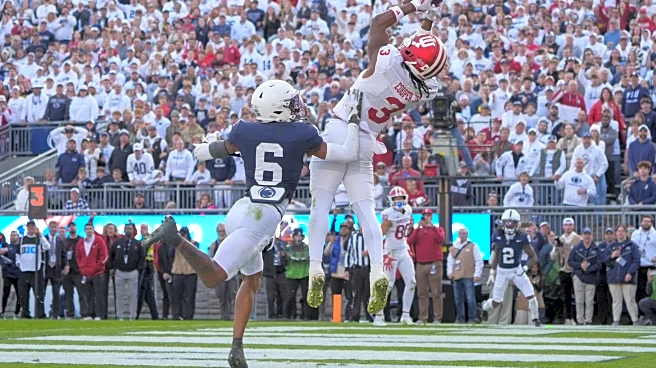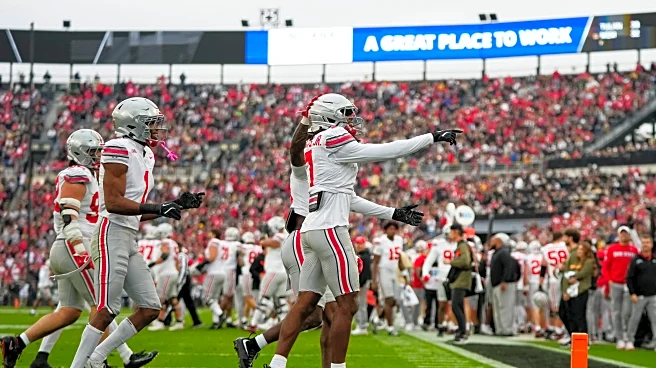What's Happening?
Jeremiah Smith, a sophomore wide receiver for Ohio State, is gaining attention as a potential Heisman Trophy contender due to his outstanding performance this season. Smith has demonstrated exceptional
skills, including route running, blocking, and football IQ, making him a formidable opponent for defensive coordinators. He recently achieved a career-high game against Purdue, recording 10 receptions for 137 yards and a touchdown. Smith's consistent performance has placed him among the top receivers in Ohio State's history, with the potential to break records for receptions, yards, and touchdowns. His ability to excel against top defenses in the Big 10 further solidifies his candidacy for the prestigious award.
Why It's Important?
Smith's emergence as a Heisman Trophy contender highlights the shifting dynamics in college football, where non-quarterbacks are increasingly recognized for their contributions. His performance not only elevates Ohio State's standing but also challenges the traditional quarterback-centric focus of the Heisman Trophy. If Smith continues to excel, he could redefine the criteria for the award, emphasizing the impact of wide receivers in the game. This development could influence recruitment strategies and the valuation of wide receivers in professional leagues, potentially altering the landscape of college and professional football.
What's Next?
With upcoming games against UCLA, Rutgers, and Michigan, Smith has the opportunity to further enhance his record and solidify his position as a top contender for the Heisman Trophy. His performance in these games will be crucial in determining his chances of winning the award. Additionally, his continued success could lead to increased attention from NFL scouts, potentially impacting his future career prospects. Ohio State's strategy in utilizing Smith's talents will be pivotal in their pursuit of a successful season and potential championship contention.
Beyond the Headlines
Smith's rise as a Heisman contender underscores the evolving role of wide receivers in college football, challenging traditional norms and potentially influencing future award considerations. His success may inspire other teams to focus on developing versatile receivers who can impact the game in multiple ways. This shift could lead to changes in training methodologies and recruitment priorities, emphasizing the importance of diverse skill sets in wide receivers.












